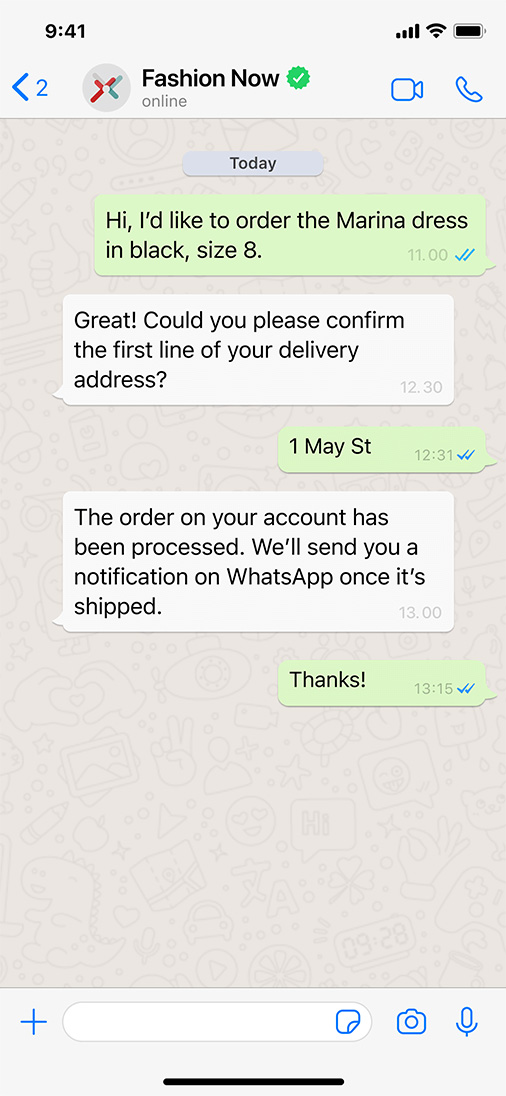NRF 2023: Understanding the year ahead in retail
January saw the return of the National Retail Federation’s (NRF) Big Show at the Jacob Javits Convention Center in New York City. With more than 350 speakers, 1000 exhibitors present and more than 175 sessions to attend, there’s no doubt about it—this is one of retail’s most important annual conventions.

Contents
This year, we were lucky enough to attend as both guests and Cisco representatives to share our insights on the key trends helping shape modern customer experiences. But what excited us most was hearing how our like-minded peers felt about the industry’s future. And, of course, experiencing the latest in retail innovation firsthand.
In this blog, we will recap three key trends we identified as being at the forefront of retail transformation in 2023 and beyond. Specifically, the technologies and strategic approaches helping enhance the customer and employee experience in retail.
Trend #1: Enhanced recruitment and shift management
Employee attrition in retail has always been high, averaging 60% in 2023. But with half of frontline retail employees and 63% of frontline retail managers considering leaving their jobs in the near future, attracting and retaining talent is more challenging than ever.
It’s been called “the great resignation”—but why are so many people leaving their jobs, and what can retailers do to hire and retain more intelligently?
Employee health and job satisfaction are considered significant factors. Furlough and sickness during the pandemic gave many people the time to rethink their careers and what they want from an employer—such as a better work-life balance. Moreover, the shift to remote and flexible working highlighted the needless stress and tedium innate to legacy systems and manual processes.
In response, retailers are exploring new ways to improve the employee experience and attract and retain talent. At NRF, we discussed how retailers could use intelligent automation to:
Recruit proactively
Retailers can use simple SMS messaging to automate staff hiring during peak seasons, for roles such as seasonal package handlers, drivers, and warehouse operatives. Job seekers can upload their CV and ID in a live chat, get their application reviewed in real-time, and confirm their interest to fast-track the hiring process.
Simplify shift management
Intelligent automation can simplify shift management, such as finding replacements for shift cover. And by connecting with employees on richer messaging channels like Messenger for example, you can automate updates and interactions based on set criteria—such as sharing uniform rules and workplace directions for new employees. Or even let employees opt in for additional shifts, report sickness, and more using your dedicated staff-facing chatbot.
Automate internal communications
Enabling chatbots to handle simple and frequently asked questions can help reduce friction and save your employees' and service agents’ time, freeing them for higher-value interactions. And by using a drag-and-drop journey builder, you can authenticate employee identities automatically and field basic queries, such as holiday allowance requests or contract and payroll details.
Trend #2: Return of the digital high street
Despite the shift to digital-first engagement during the pandemic, it’s clear that the high street is going nowhere. But that’s not to say high street retail can afford to ignore the connected convenience normalized by e-commerce and digital services. Today’s customers expect more control over how, when, and where they shop.
In our recent customer study, more than half of respondents said they would definitely return to a company or brand if communication was consistent across people and teams. And 73% said convenience is extremely or quite important to a good experience. So, how do you deliver that level of connected convenience in-store and beyond?
NRF offered an ideal spotlight for innovative retailers, blending digital interactions into the high-street experience. This included showing how a mixture of CPaaS messaging, data analytics, and IoT technologies can help you:
Empower employees with a single source of truth
To deliver a consistent experience across all interactions, your employees need a single connected view of the customer and supply chain. This includes customer engagement histories, preferences, and real-time logistical insights.
While often positioned as a service agent solution, retailers are increasingly equipping their floor staff with connected devices to deliver such a view. This also lets employees communicate with each other on a single platform to coordinate service and update the team on stock availability or any potential disruption.
We’re also seeing more retailers adopt mobile POS solutions in-store. This empowers staff to serve customers and process payments wherever they are, including arranging home delivery and processing returns on the shop floor.
Delver frictionless checkout and delivery
Frictionless checkout experiences like Amazon's ‘Just Walk Out’ technology enables consumers to shop in-store and leave without queuing. Payments are handled by AI-powered vision sensors, readers, and deep learning—combining the best of in-store shopping with the convenience of digital.
Better yet, in-store QR codes assigned to specific products can push customers to Messenger for automated chatbot interactions or speak with a live agent. Here, they can learn more about products, check stock availability, arrange delivery, or even complete their checkout.
75% of customers say they prefer to engage with brands using instant messaging.
Trend #3: Seamless conversational commerce
According to Statista’s research, spending on conversational commerce channels, such as WhatsApp and RCS, will total approximately $290 billion by 2025. Plus, in our study, 75% of respondents said they prefer to engage with brands using instant messaging.
It’s an opportunity retailers can no longer afford to ignore—and a simple but effective way to nurture brand loyalty by delivering connected, empathetic, and personalized interactions. When and where it matters most.

This includes using automated chatbots on platforms like WhatsApp to help customers:
Check store hours and stock availability
Get personalized recommendations
Arrange and amend deliveries and pickup
Request a live chat with a human agent
Know when a specific item comes in stock
Buy items there and then—even in store
By connecting all interactions on a single platform, you can build a more accurate view of the customer to inform strategic decision-making and deliver personalized end-to-end journeys based on contextual evidence.
Get it right, and it may just help your bottom line too, with 85% of customers saying they are more likely to buy from a company that interacts in a personalized way.
To learn more about NRF and how Cisco can help build the capabilities you need to deliver connected customer journeys at scale, please get in touch.



